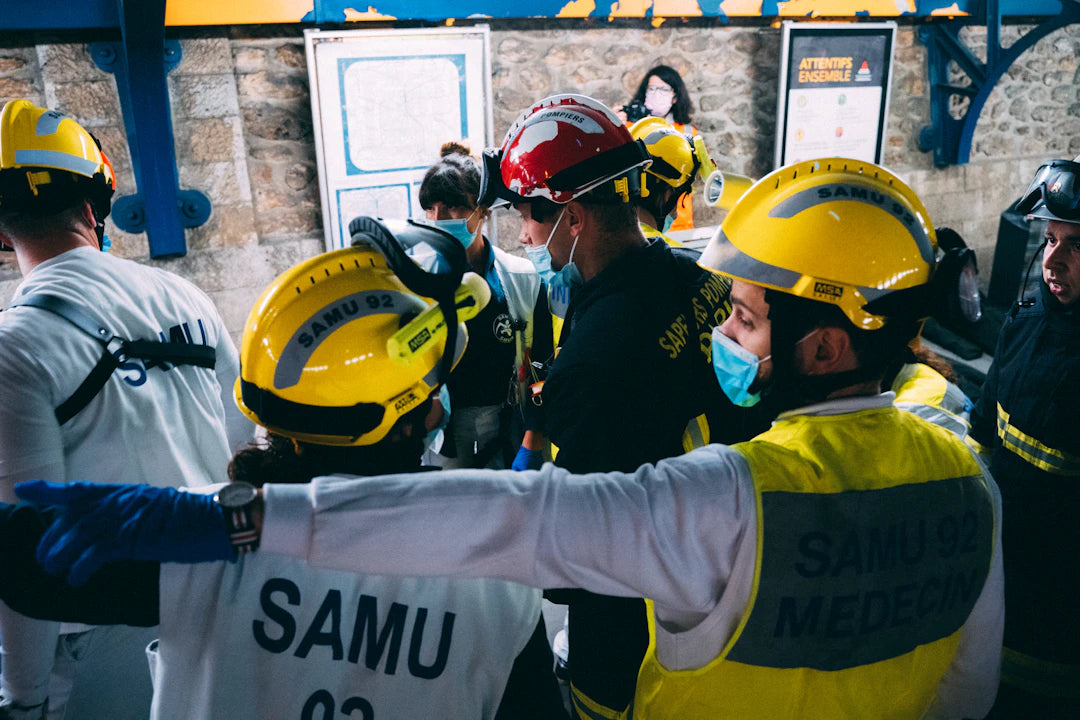In the fast-paced environment of daily life, injuries can happen when we least expect them. Whether you’re out on a hike, at home, or in a bustling workspace, knowing how to handle injuries quickly and effectively can make all the difference. This article aims to arm you with essential knowledge on how to respond to common injuries while emphasizing the importance of being prepared with a tactical trauma backpack and an Individual First Aid Kit (IFAK kit).
Understanding Common Injuries
Before diving into treatment protocols, it's crucial to understand the most common injuries people face:
- Cuts and Scrapes: Often sustained during outdoor activities, these injuries can range from superficial to deep.
- Burns: Whether from fire, hot liquids, or chemicals, burns require immediate attention.
- Sprains and Strains: Usually due to sports or physical exertion, these injuries can cause significant pain and disability.
- Fractures: Broken bones can occur during falls, accidents, or while playing sports and necessitate immediate care.
- Head Injuries: Concussions or other head injuries can be tricky and require careful observation.
Preparation is Key
To respond to these injuries effectively, having the right supplies on hand is critical. This is where a tactical trauma backpack comes into play. These backpacks are designed for quick access to first aid equipment and have ample space for additional tools. An IFAK kit within your tactical trauma backpack can provide essential items such as bandages, antiseptics, and emergency tools, ensuring you're prepared for a variety of situations.
How to Respond to Specific Injuries
Cuts and Scrapes
When dealing with cuts and scrapes, the primary goal is to stop the bleeding, clean the wound, and protect it from infection. Here’s a step-by-step guide:
- Stop the Bleeding: Apply gentle pressure with a clean cloth or bandage.
- Clean the Wound: Rinse under running water. Use mild soap around the area if available.
- Apply Antibiotic Ointment: This will help prevent infection.
- Cover with a Bandage: Use a sterile bandage to keep the area protected.
Burns
Burn treatment depends on the severity of the burn:
- First-Degree Burns: These burns affect only the outer layer of skin. Cool the burn under running water for at least 10 minutes and apply aloe vera or a moisturizing lotion.
- Second-Degree Burns: These may cause blisters. Do the same as with first-degree burns and do not pop the blisters.
- Third-Degree Burns: Seek emergency medical help. Cover the area with a clean cloth and avoid applying ice or any ointments.
Sprains and Strains
Managing sprains and strains effectively involves following the R.I.C.E method:

- Rest: Stop using the affected area.
- Icing: Apply ice packs intermittently to reduce swelling.
- Compression: Use an elastic bandage to compress the area.
- Elevation: Keep the injured area elevated above the heart to minimize swelling.
Fractures
If you suspect a fracture, it’s essential to minimize movement of the affected limb:
- Immobilize the Area: Make a splint with a rolled-up newspaper or a piece of cardboard.
- Seek Medical Help: Fractures often require medical professionals to assess and treat.
- Do Not Attempt to Realign: Never try to reposition a dislocated joint or a fractured bone yourself.
Head Injuries
Head injuries can be serious. Always monitor for symptoms like confusion, nausea, or prolonged headache. For minor head injuries:
- Assess the Injured Person: Ask them questions to check for confusion or disorientation.
- Apply Ice: Use an ice pack wrapped in cloth to reduce swelling.
- Seek Medical Attention: If symptoms worsen, visit a hospital immediately.
When to Seek Professional Medical Help
While knowing how to respond to injuries is crucial, recognizing when to seek professional help is equally important. You should always consult a medical professional if:
- The injury is severe or does not improve with basic first aid.
- You notice signs of infection such as redness, swelling, or fever.
- The injured person exhibits confusion, drowsiness, or difficulty speaking after a head injury.
- The injured limb is deformed or cannot bear weight.
Creating Your Emergency Response Plan
Creating an emergency response plan can help you and your loved ones feel more confident when responding to injuries. Here’s how to get started:
- Educate Yourself: Take a basic first aid and CPR course to prepare.
- Assemble an Emergency Kit: Equip your tactical trauma backpack or IFAK kit with essentials, including bandages, antiseptics, scissors, gloves, and emergency contact information.
- Practice Regularly: Review your emergency response plan and practice scenarios with your family or group.
- Stay Informed: Keep updating your first aid knowledge with new information and techniques.
Fostering a Safety Culture
Integrating a safety culture into your personal or workplace environment is vital. Here are some tips to help build this culture:
- Regular Training: Schedule regular training sessions for your team or family on first aid responses and emergency protocols.
- Open Discussions: Encourage conversations about safety and preparedness among your peers.
- Promote Equipment Readiness: Ensure everyone understands how to use the items in the tactical trauma backpack or IFAK kit.
Your Lifeline in Emergencies
Being equipped with knowledge and the right supplies can empower you to respond effectively to common injuries. Investing in a tactical trauma backpack and an IFAK kit is a step toward safety and preparedness. Remember, while it’s essential to know basic treatment techniques, your ultimate goal should be to seek professional medical assistance when necessary. By prioritizing safety and preparedness, you can navigate through accidents with confidence and resilience, making a positive impact on yourself and those around you.


